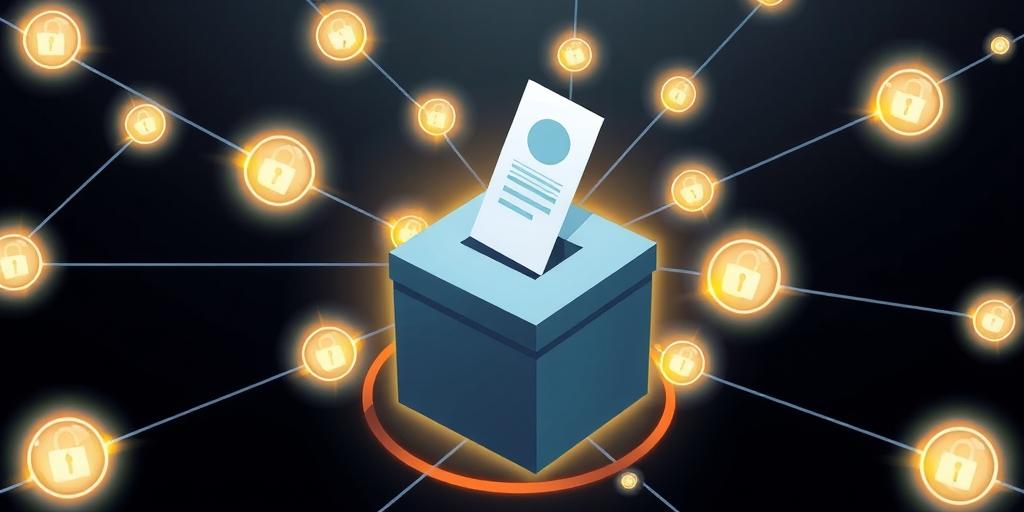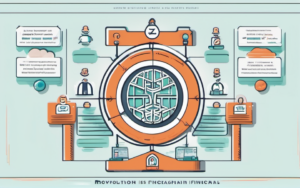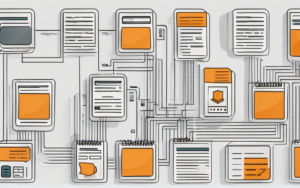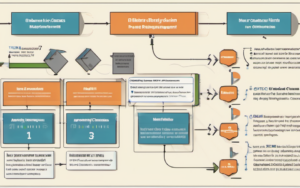Blockchain voting is generating significant interest as a potential solution to enhance the security and transparency of elections. The promise of a tamper-proof, auditable system is alluring, but a critical examination of its security is crucial before widespread adoption. While blockchain offers exciting possibilities, a thorough understanding of its limitations and potential vulnerabilities is essential to determine if it truly delivers on its promises.
1. Introduction
1.1 The Allure of Blockchain Voting
The idea of using blockchain for voting systems is captivating. Blockchain’s inherent features, such as decentralization and immutability, seemingly offer a robust solution to address long-standing concerns about election integrity. The potential for increased transparency and reduced opportunities for fraud is a powerful draw for proponents of blockchain voting. Many believe that it could foster greater trust in the electoral process and enhance public confidence. This technology could revolutionize how we conduct elections, moving away from centralized, vulnerable systems.
1.2 The Need for Scrutiny
However, the enthusiasm surrounding blockchain voting must be tempered with a realistic assessment of its security. While the technology offers significant advantages, it’s not a silver bullet. Complex technical challenges remain, and overlooking potential vulnerabilities could lead to unforeseen consequences. A thorough analysis of the security risks associated with blockchain voting is necessary to determine whether it’s a viable and secure alternative to traditional systems. This requires a balanced perspective that considers both its strengths and weaknesses.
2. Blockchain Technology: A Primer
2.1 Decentralization and Transparency
Blockchain operates on a decentralized network, eliminating a single point of failure. This means that no single entity controls the voting data, making it more resistant to manipulation. Transactions are recorded on multiple nodes, enhancing transparency and making it difficult to alter records without detection. This decentralized nature forms a core aspect of its potential for secure voting.
2.2 Immutability and Data Integrity
Once a transaction (vote) is recorded on the blockchain, it cannot be altered or deleted, ensuring data integrity. This immutability is a key security feature, preventing fraudulent changes to vote counts after the election. This creates a verifiable and auditable trail of every vote cast, enhancing trust and accountability.
2.3 Cryptographic Security
Blockchain leverages sophisticated cryptographic techniques to secure transactions and protect voter identities. This ensures the confidentiality and authenticity of votes, preventing unauthorized access and tampering. The use of cryptography is essential for maintaining the security and integrity of the blockchain voting system.
3. Security Advantages of Blockchain Voting
3.1 Enhanced Transparency and Auditability
Blockchain’s transparent nature allows for independent audits of the election process. Every vote cast is recorded on the public ledger, making it possible to verify the accuracy of the results. This enhanced transparency can significantly deter fraudulent activities and increase public trust in the election outcome. The ability to audit the entire process offers a level of accountability unparalleled in traditional systems.
3.2 Reduced Risk of Fraud and Manipulation
The decentralized and immutable nature of blockchain drastically reduces the risk of fraud and manipulation. It’s significantly harder to alter vote counts or tamper with the system when the data is distributed across multiple nodes. This resilience against manipulation is a primary benefit of adopting blockchain technology for voting.
3.3 Improved Voter Privacy (with caveats)
While blockchain can enhance voter privacy through techniques like zero-knowledge proofs, careful consideration is needed. Designing a system that balances privacy with the need for verifiability is a critical challenge. The implementation must ensure that individual votes are not linked to voter identities while still allowing for audits to verify the integrity of the election.
4. Potential Vulnerabilities and Challenges
4.1 Smart Contract Vulnerabilities
Smart contracts, which automate the voting process, can be vulnerable to bugs and exploits. A flaw in the smart contract code could allow for unauthorized access or manipulation of votes. Rigorous auditing and testing of smart contracts are crucial to mitigate this risk. This requires expertise in both blockchain technology and election security.
4.2 51% Attacks and Network Security
A 51% attack, where a single entity controls more than half of the network’s computing power, could compromise the integrity of the blockchain. Ensuring the network’s security and preventing such attacks is paramount. This necessitates robust network design and mechanisms to prevent malicious actors from gaining control.
4.3 Accessibility and Digital Divide
The digital divide poses a significant challenge to the widespread adoption of blockchain voting. Not all voters have equal access to technology or the necessary digital literacy to participate effectively. Addressing this digital divide is crucial for equitable and inclusive elections. Solutions might involve providing accessible voting terminals or offering assistance to less tech-savvy voters.
4.4 Scalability Issues for Large-Scale Elections
Blockchain systems can struggle with scalability when dealing with a large number of transactions, such as those encountered in large-scale elections. Efficient processing of millions of votes within a reasonable timeframe is a major technical challenge. Solutions involve exploring different consensus mechanisms or using sharding techniques to improve scalability.
4.5 Usability and User Experience
The user interface and experience for blockchain voting systems must be intuitive and user-friendly for widespread adoption. A complex or confusing system could discourage voter participation. Design should prioritize simplicity and ease of use, ensuring all voters can participate effectively regardless of their technical skills.
5. Case Studies and Real-World Examples
5.1 Successful Implementations (if any)
While large-scale deployments of blockchain voting systems are still relatively rare, several pilot projects and small-scale implementations have been undertaken. These projects offer valuable insights into the practical challenges and opportunities presented by this technology. Analyzing successful implementations helps to identify best practices and refine future deployments.
5.2 Lessons Learned from Pilot Projects
Pilot projects have highlighted the importance of thorough testing, clear communication with voters, and addressing potential vulnerabilities before full-scale implementation. These projects provide crucial feedback on user experience, system scalability, and overall effectiveness. Learning from these experiences is crucial for refining the technology and ensuring future success.
5.3 Challenges Encountered in Practice
Challenges encountered in practice often involve issues with smart contract security, user interface design, and integration with existing electoral infrastructure. Addressing these challenges through iterative development and collaboration is essential for building robust and reliable blockchain voting systems. Open-source development and community involvement can be particularly beneficial in this context.
6. Comparing Blockchain Voting to Traditional Systems
6.1 Cost-Effectiveness Analysis
The cost of implementing and maintaining a blockchain voting system needs careful consideration. While long-term benefits might outweigh the initial investment, a thorough cost-benefit analysis is crucial. This analysis should include factors such as infrastructure costs, software development, security audits, and training.
6.2 Efficiency and Speed of Vote Counting
Blockchain voting systems can potentially streamline the vote counting process, reducing delays and improving efficiency. However, the speed of counting depends on various factors, including network performance and the complexity of the system. A comparison with traditional methods is crucial to understand the true efficiency gains.
6.3 Legal and Regulatory Frameworks
The legal and regulatory landscape surrounding blockchain voting is still evolving. Developing appropriate legal frameworks and regulations is crucial to ensure the security, integrity, and fairness of blockchain-based elections. This requires collaboration between technology developers, legal experts, and election officials.
7. Future of Blockchain Voting Systems
7.1 Addressing Current Limitations
Future developments in blockchain technology will focus on addressing current limitations, such as scalability and usability issues. Innovations in consensus mechanisms and improved smart contract security will play a crucial role in enhancing the robustness and reliability of blockchain voting systems.
7.2 Technological Advancements and Innovations
Ongoing research and development are exploring new technologies and approaches to improve the security, privacy, and efficiency of blockchain voting. These advancements are critical for overcoming the challenges and realizing the full potential of blockchain in the electoral process. Exploring hybrid approaches that combine blockchain with other technologies is also a promising area of research.
7.3 Integration with Existing Election Infrastructure
Seamless integration with existing election infrastructure is critical for the successful adoption of blockchain voting. This requires careful planning and collaboration between technology providers and election officials. A phased approach, starting with pilot projects and gradually integrating the technology into larger elections, is a pragmatic strategy.
The journey towards secure and reliable elections using blockchain technology is an ongoing process. While challenges remain, the potential benefits are undeniable. Continued research, development, and careful implementation are key to unlocking the transformative potential of blockchain voting and building a more secure and transparent electoral future. The path forward requires a collaborative effort involving technologists, policymakers, and the public to ensure that this promising technology is implemented responsibly and effectively.




